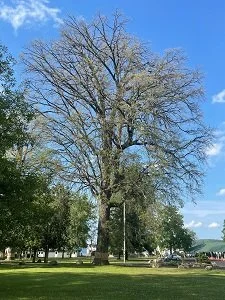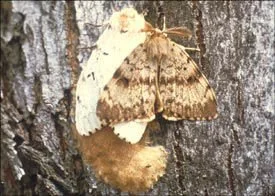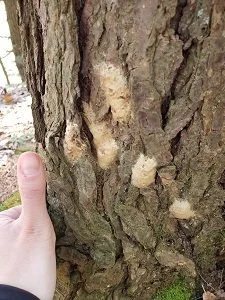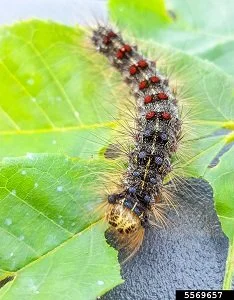Spongy Moth Invasion
/Spongy moths are incredibly destructive!
They defoliate trees and in some circumstances, that defoliation can kill the affected trees.
"Spongy moth populations rise and fall in cycles of roughly 10-15 years. Populations vary during the cycle, from years with few caterpillars and very minor damage, to years with large numbers of caterpillars and very noticeable leaf damage and tree defoliation. These population cycles are driven by predator-prey interactions, specifically the interactions between spongy moth, small mammals, and acorn production."
Spongy moth defoliated tree in mid-June
Maybe you've seen the Spongy Moths in your area over the last few weeks. They are brownish in color and unlike other moths, they often will fly into you and continue to circle or flutter against you.
Spongy moth laying eggs on tree bark
Here is the up-to-date information from the DEC:
How to Predict Defoliation in Your Area
August through April
"You can survey your woodlot or forest to determine the likelihood spongy moth defoliation for the next growing season. This can be done when egg masses are present, approximately August through April. The surveys typically take 20 minutes to 1 hour to complete, depending on population numbers."
When you see these egg masses, you want to scrape them off your trees and soak them in soapy water or burn them.
Egg masses on a tree with a thumb for scale
Egg masses appear fuzzy and tan
If you do conduct sampling, please share your data with the DEC. Your work is valuable to us for tracking annual populations across New York State.
"The larval stage of the spongy moth is a caterpillar that hatches in the spring from eggs laid the summer before. It hatches about the time oak buds start to open. Young caterpillars need to eat tender new leaves. As a caterpillar grows, it can eat older, tougher leaves.”
”The caterpillars grow to about 2.5 inches in length. They have five pairs of raised blue spots followed by six pairs of raised red spots along its back. The hairs on their backs can cause mild to moderate skin irritation in some people. Female moths are white with brown markings. Males are brownish. Females do not fly. Egg masses are light brown in color and appear as fuzzy patches on tree trunks, branches, firewood, or in a sheltered spot, even on lawn furniture. Each egg mass contains 600-700 eggs.
Tent caterpillars look similar to spongy moths and also feed in the spring."
Bands, Barriers, and Traps
In late April
"In late April, sticky/barrier bands may be placed around the tree's trunk to catch caterpillars when they hatch and crawl. These bands can be bought or made at home using common household materials. View detailed instructions on how to make and use your own trap on the University of Wisconsin website. If you choose to use a barrier band, please check it often in case unintended wildlife pass through, and replace as necessary after rain events."
In June
"In mid-June when caterpillars are larger, replace sticky/barrier bands with a burlap trap. View detailed instructions on how to do this on the University of Wisconsin website."
Protect your trees!





